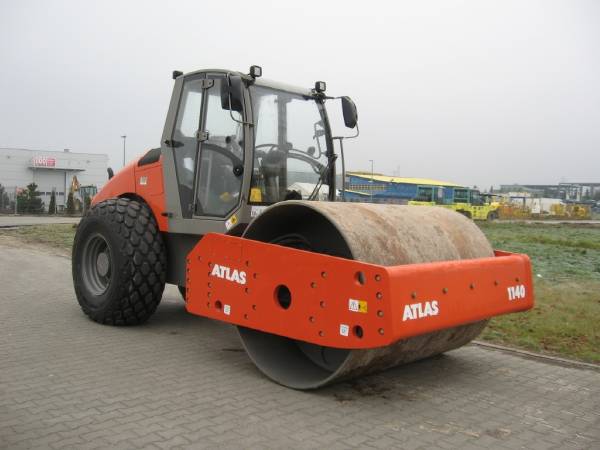
Revealing the Remarkable Purposes of Soil Compaction
May 23, 2019
What are the purposes of soil compaction?
- Increases the load-bearing capacity
- Prevents soil settlement
- Improves ground stability
- Reduces water seepage
Soil compaction is one of the most critical phases in most construction projects. For the construction of large structures such as earth dams, skyscrapers, and highway embankments, soil compaction is necessary. The level of soil compaction needed is different from each project, requiring different kinds of road rollers.
The main purpose of compressing soil is to remove the air and water from the pores found in the spaces between soil particles such as rock, stone, and earth. The compaction itself is considered a change in the soil’s structure. Healthy soils would have pores of different sizes. Through soil compaction, these pores will mostly become minuscule. The reduction of pore size contributes to a number of benefits that are vital for most construction projects.
The three most important engineering properties of soil include its strength, compressibility, and permeability. Compaction focuses on increasing its strength while also decreasing permeability—making it more stable for structure foundations. For a deeper understanding of the purposes of soil compaction, check out the list below.
Increases Load-Bearing Capacity
By compressing the soil and reducing the size of pores within the soil, particles are less likely to be displaced when exposed to an external force. However, the compaction process needs to be done in specific ways to achieve a notable increase in the load-bearing capacity.
For example, the compaction done by a normal road roller is different from a vibratory roller—both of which are different from compaction done by manual means.
The most apparent factors that affect soil compaction, particularly for road rollers, include the time it takes for the drum to flatten the soil, the weight of the machine, and whether or not vibrations are used.
Soil compaction can increase the load-bearing capacity by an extreme amount. for example, loose gravel has a bearing capacity of 25,000 kg/m3 while compacted gravel can support 45,000 kg/m3. The significant difference can mean all the difference in many structural construction projects.
Prevents Soil Settlement

One of the most dangerous and structure-affecting problems with soil is when it begins to settle. Soil settlement happens when the ground moves downward because of an increase in effective vertical stress. Soil settlement is dangerous because even a small difference in the foundation of structures can lead to massive damages in the long run.
A common type of soil settlement is known as differential settlement. This happens when a building’s foundation settles unequally. A part of the building is strong and stable while another part has the foundation move downward—producing stress within the structure and eventually leading to damage.
Soil compaction prevents this because it strengthens the foundation where buildings are to be constructed. Correct soil compaction will result in an even and stable foundation where the soil in the area has very small pore sizes, reducing the risk of unnecessary displacement in the future.
Improves Ground Stability
Limiting the movement of soil particles leads to the stabilization of the ground. The more compressed the soil is, the less space its particles have to move around when force is applied. With little to no movement between soil particles, the ground will basically be locked in place. There won’t be any settlement and there won’t be any crumbling due to an external force.
This is one of the most important aspects as to why soil compaction is needed for construction. It’s with this stability that structures of massive proportions can be created. Yes, foundations would usually have further supplementary constructions such as the use of large steel components and concrete, but when it comes down to it, it’s still the soil that provides the most widespread stability to the majority of structures.
Reduces Water Seepage

Soil naturally absorbs liquids—especially water. However, through soil compaction, its permeability is drastically decreased. Sometimes it can even be zeroed out, effectively blocking off water from moving through.
This is incredibly important as water can easily soften soil when left unchecked. If a decent amount of water was to seep through the foundations of a building for a period of time, it can cause soil particles to move through—creating more and more pores that will weaken the whole foundation.
That being said, soil compaction can reduce the chances of water seepage to almost nonexistence. It does, however, need other practices to fully keep water out—but for the most part, concrete is sufficient.
Key Takeaway
Structures are nothing without the foundation on which they are built. A foundation basically lays out the limits and constraints of buildings. It also enables that construction projects are done as smoothly and safely as possible.
Soil compaction may not be one of the more complicated and extensive construction practices—but fundamentally, it’s one of the most important initial procedures for each and every construction site out there.
